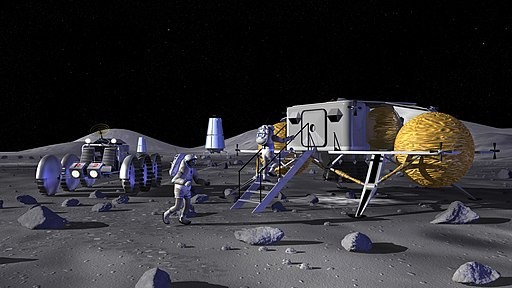As humans travel deeper into space and explore other worlds, they face the challenges of harsh environmental conditions and damages that require repairs.

Challenges in Extraterrestrial Colonization
In the coming decades, NASA plans to send human crews back to the moon and build a space station in lunar orbit. It aims to establish a permanent base on the lunar surface and eventually send humans to Mars. These missions, however, will come with risks and challenges.
As humans build lunar and Martian outposts, they will encounter harsh and unpredictable environments with radiation, meteorites, and other hazards that could damage their habitats. They can save time and resources by delegating routine tasks to machines, but they need to make sure that these machines are reliable.
One of the challenges in designing robots for such missions is the multifunctionality required for deep space habitation. Typical industrial robots, like those used in building cars or stock warehouses, are highly specialized and perform only specific tasks.
However, deep space habitats do not have room for dozens of specialized robots. Instead, one or a few multifunctional robots are needed to perform many different tasks, such as emergency repairs.
Maintaining Habitats With Robots
A group of experts from Harvard John A. Paulson School of Engineering and Applied Sciences (SEAS) developed robots to replace or repair damaged components in a space habitat to address this challenge. Their works are discussed in the paper "Transformable Linkage-Based Gripper for Multi-Mode Grasping and Manipulation."
Purdue University leads the Resilient ExtraTerrestrial Habitats Institute (RETHi) in collaboration with the University of Texas at San Antonio, SEAS, and the University of Connecticut. Their goal is to design and operate deep space habitats SmartHabs, which can recover from expected and unexpected disruptions.
The project began in 2019 and involved the development of new robotic arms and grippers for improved human-robot collaboration and new ways of designing robot-friendly equipment. Developing the technology for autonomous robots is led by SEAS senior research fellow in robotics, Justin Werfel.
In this project, a gripper was developed with fingers made of scissor links, which can be reconfigured to change the number of joints in the finger. Three modes come with the gripper. In the first mode, the fingers are short and do not bend, allowing the robot to grasp objects firmly and securely. In the second, the fingers gain a joint to let the gripper manipulate in hand, enabling the robot to move and rotate objects without letting go of them. In the last mode, two more joints are added, which allow the fingers to passively adapt to the shape of an object and distribute contact pressure. This feature helps grasp delicate or irregularly shaped objects.
RETHi is entering the last year of its grant, and the SEAS robotics team will put the technology to the test in a combined physical and virtual simulation of the scenario of patching a hole made by a meteorite impact. The research team hopes their design could lead to more capable soft robot arms that can navigate the obstacle-rich environment of deep-space habitats while interacting safely with human crew members and delicate objects.
RELATED ARTICLE : NASA Selects Firefly Aerospace for Lunar Mission in 2026 To Deliver Payloads to the Farside of the Moon
Check out more news and information on the Lunar Mission in Science Times.










